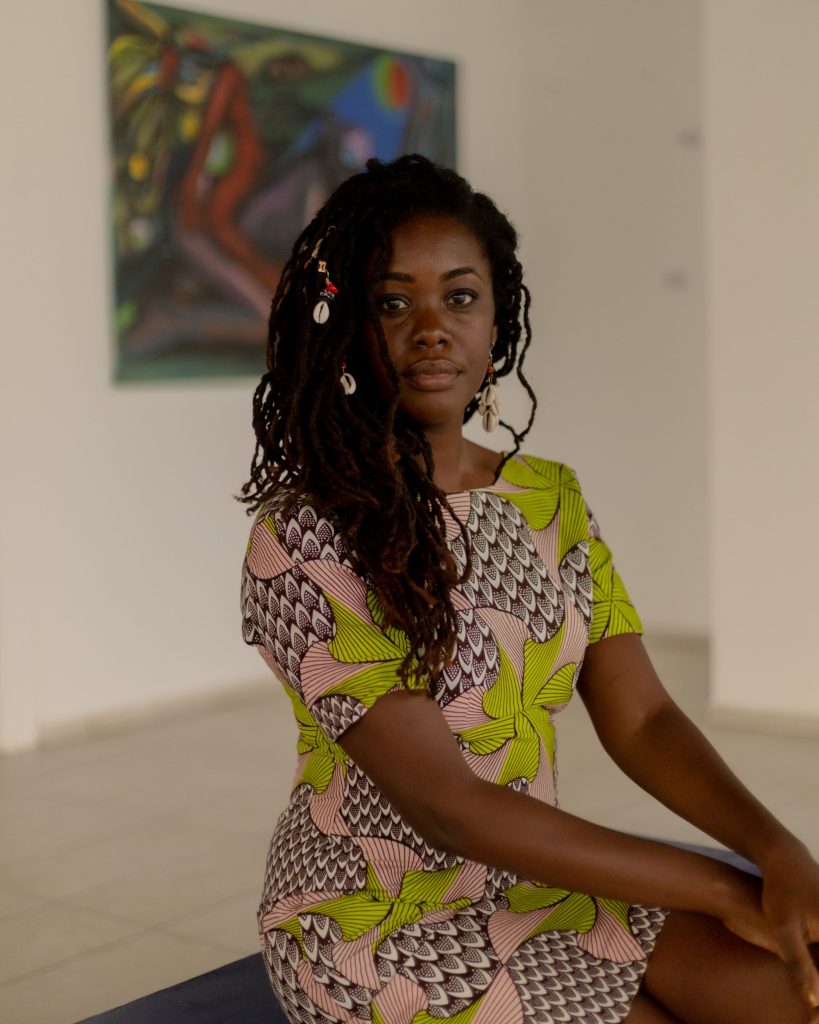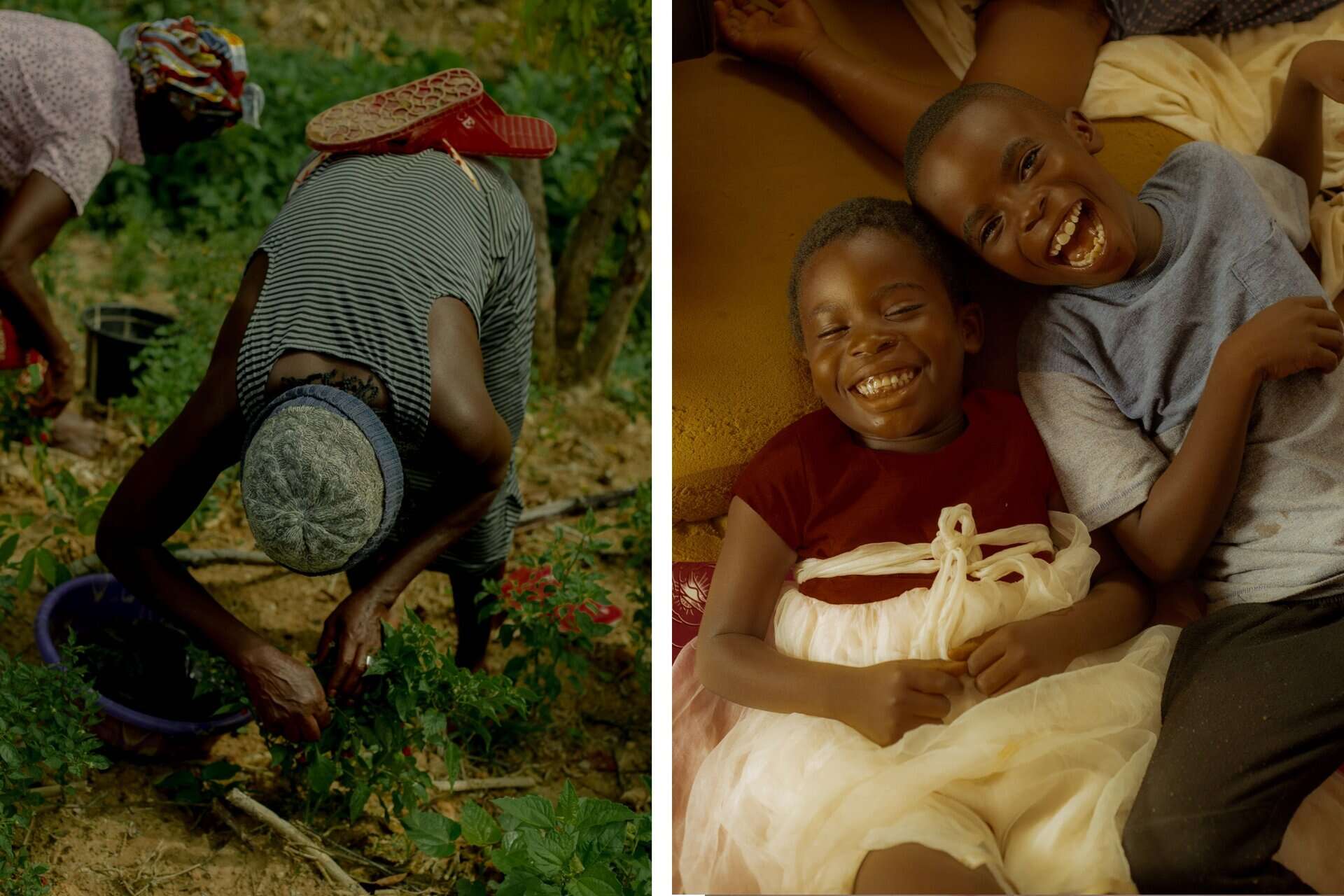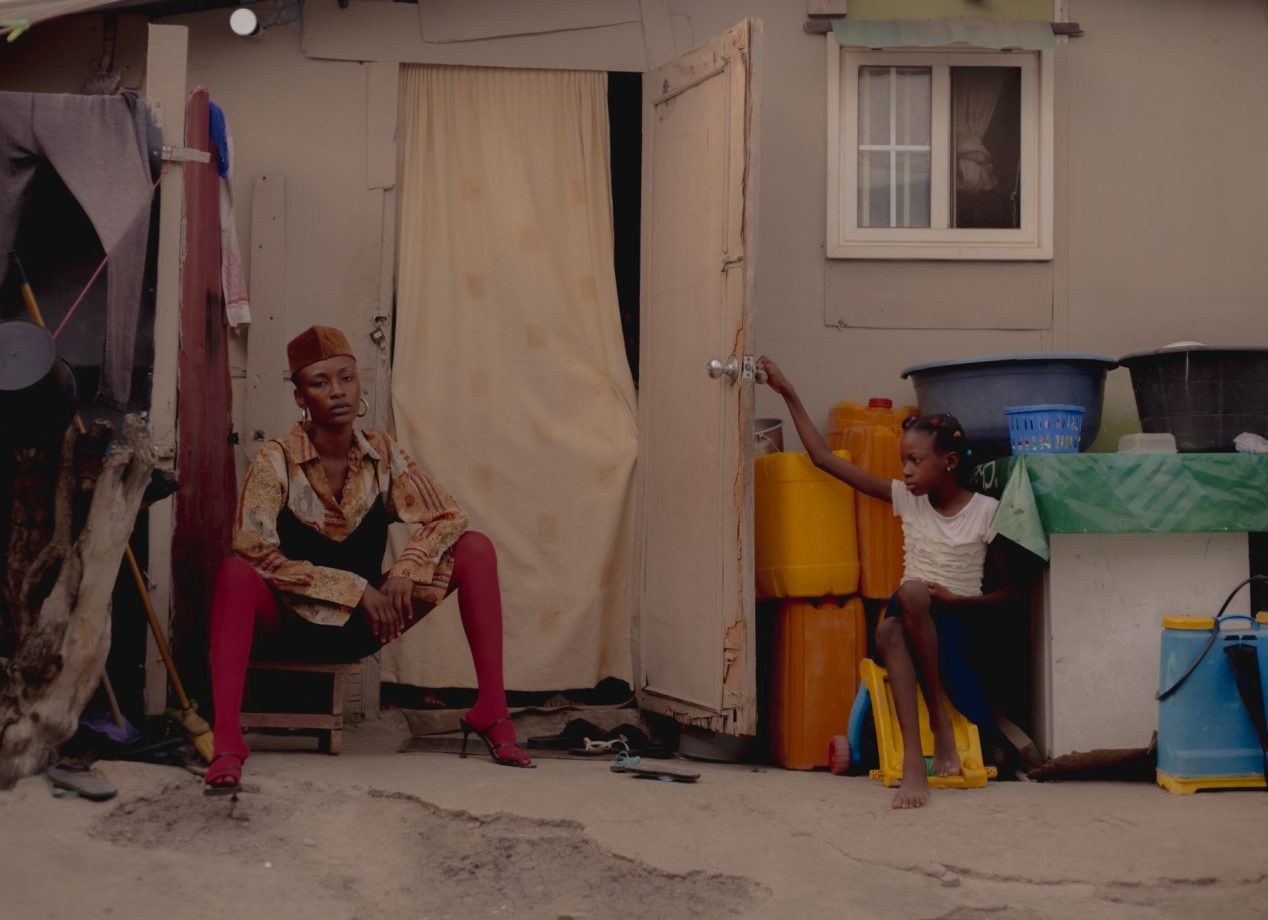During the MA in Art Business at Sotheby’s Institute, Chantel Thompson combined her curatorial experience with entrepreneurial skills to launch NOW Images—a curated digital licensing platform showcasing authentic African photography. Her vision won The Gavel, the Institute’s start-up pitch competition, recognising her mission to promote ethical, authentic storytelling across the continent.
 What drove your decision to apply for a Sotheby’s Institute MA program?
What drove your decision to apply for a Sotheby’s Institute MA program?
I had been working in the art world in Ghana since leaving full-time teaching in 2021. My focus was on supporting artists to navigate the international art world—acting as a bridge between their studios in Ghana and the wider network of galleries, collectors, and opportunities abroad. By the time I applied to Sotheby’s Institute, I had already been recognized locally as a cultural leader and had the privilege of curating internationally, including with acclaimed artists such as Amoako Boafo.
I had also contributed writing to respected art publications, including the Metropolitan Museum of Manila’s exhibition catalog for Sounds of Blackness, curated by the visionary Larry Ossei-Mensah, and the debut monograph of Afro-Brazilian painter Zeh Palito. In 2024, I was entrusted with helping to shape the direction of a new arts foundation in Ghana, serving as its first Managing Director.
All of these experiences were deeply rewarding. They allowed me to sharpen existing skills, grow professionally, and gain the trust of my peers. But despite this, I still felt there were gaps in my formal academic training—particularly around the business side of the art world. I chose the MA Art Business program at Sotheby’s Institute because I believed it could provide that critical foundation, helping me support artists more effectively in building sustainable careers in Ghana and beyond.
I was only able to pursue this opportunity thanks to the Cultural Leaders Program and Culture&. Without that support, studying at the Institute simply wouldn’t have been financially accessible to me. I’m incredibly grateful for that opportunity—it’s opened doors I couldn’t have imagined.
How has the MA Art Business program at Sotheby’s Institute equipped you with the tools and knowledge to navigate the art industry?
Understanding the history of the art market and the dominant ecosystems that sustain it is invaluable. This foundation not only helps to cut through the noise but also offers a clearer path for navigating an industry that can often feel impenetrable. It enables us to reimagine a future for the art world—one that is more equitable, inclusive, and reflective of a broader range of voices. Despite its potential to dismantle barriers, the industry continues to uphold structures that prevent it from being truly just and inclusive. Meaningful change must come from within, which is why having a deep and critical understanding of the art world—as offered by the MA Art Business program at Sotheby’s Institute—is essential.
The Enterprise Studio offers Master’s students training and support for new business ventures, culminating in a start-up pitch competition, The Gavel. What were some of the most valuable lessons or skills you gained from the Enterprise Studio experience?
One of the biggest takeaways from the Enterprise Studio was realizing that just having an idea is enough to get started. I loved that everyone’s ideas were valued equally, no matter how developed they were.
Sometimes, just having someone listen and believe in what you’re saying can make a huge difference—it really builds your confidence and pushes you to grow. Beyond that, the exposure to professionals who could share tips on financial projections and how to attract investors through the financial data presented were valuable lessons.
Also, the power of earned media and building a personal brand- it was just a game changer learning how to be ones own PR machine when you’re still a start up and may not be able to afford a professional. The preparation for The Gavel competition was a game-changer. It provided a realistic framework for what investors are looking for, how to craft a compelling narrative, and how to use your passion to clearly communicate your value proposition. Learning to channel that passion into a persuasive pitch helped me develop both the confidence and clarity to articulate my ideas effectively and inspire belief in others.
Having won the Gavel competition, what is next for your business NOW Images?
Right now, I’m focusing on research to better understand the needs of both our potential buyers and the photographers we aim to support. We're also developing educational content and resources to promote ethical working practices among photographers. This includes guidance on how to work respectfully with models and everyday people, ensuring model release forms are properly signed, and making sure contributors are fairly compensated.
We're creating resources around licensing, usage rights, and providing template contracts to help photographers protect their work and negotiate better. These materials will be released online alongside a series of webinars and in-person seminars, with events planned in both West and East Africa, supported by a few key partners.
Cianeh A. Kpukuyou my co-founder and NOW Image’s creative director, is refining our onboarding process and seeking out talent as well as categorizing her archive which will be uploaded to the site for testing the MVP.
We're also preparing to launch NOW54, a special publication aimed at raising both funds and awareness for the platform. It will feature powerful imagery from all 54 African countries, curated around a central theme.
Behind the scenes, we’re finalizing the development of our online platform. We’ve already built and tested a prototype, and we're now working on some refinements based on user feedback. We're lucky to be working closely with a group of amazing advisors as we move forward.
What inspired the creation of NOW Images, and how did your experience as a curator shape its mission to promote visual justice and authentic African storytelling?
The idea for NOW was born out of real, lived experiences I had while working closely with two incredibly talented photographers based in Ghana: Jude Lartey and Cianeh A. Kpukuyou.
When I met Jude, his Converse campaign had just gone viral. Yet behind the scenes, many of the opportunities he’d received weren’t fairly compensated and his career wasn’t yet financially sustainable. I supported him in building agency—helping him pitch ideas, set boundaries, and seek fairer opportunities.
I also curated his first solo exhibition and helped secure both local and international media coverage. His career has grown significantly since.
These experiences opened my eyes to the huge disconnect between how African photographers are perceived online and the structural and financial barriers they often face behind the scenes.
The real spark for NOW, came through my work with Cianeh, whose practice leans more toward vernacular, lifestyle, and documentary photography. In fact, we’ve been building NOW together from the very beginning. I had been supporting her with the business side of her practice so she could focus more freely on her creative work. Around that time, we started receiving a wave of image requests—many of which treated her photos like generic stock imagery rather than intentional, culturally rooted storytelling.
When we began researching what was already available, the findings were disappointing. Most image banks were outdated, riddled with clichés, and largely owned by non-Africans who had flown in, extracted content, and left—resulting in visual narratives that felt disconnected, inauthentic, and exploitative.
That’s when we knew a platform like NOW was needed—one that not only champions authentic African storytelling but also advocates for visual justice, fair compensation, and ethical image usage.
The name NOW: Narrating Our Wakka came from Cianeh. "Wakka" is a Nigerian slang word for "journey," and it perfectly captured our intention: to narrate our own paths, in our own voices.
My background as a curator—particularly one focused on amplifying underrepresented voices—has deeply informed the mission of NOW. It’s not just about presenting beautiful images; it’s about building sustainable systems that respect and support the dignity of the creators behind them.
It also allows us to carve out a space in the premium image market. With an understanding of how the art world and image licensing operate, we’re positioning NOW as a curated, high-quality offering.
This higher-end positioning also gives us room to expand—into publications, print sales, and exhibitions—ultimately creating more visibility and value for both the creators and the audiences we serve.

NOW Images positions African photographers as image-makers, and Africa itself as a source of inspiration, innovation and vision. How do you see this shift in perspective shaping global perceptions of African identity and culture within the media landscape?
The term “image-maker” actually came to me through working with creative professionals in Ghana—individuals who use cameras as just one tool in a broader practice rooted in storytelling, intention, and expression. For them, it’s never just about taking pictures; it’s about authorship. That insight fundamentally shifted how I understood photography—not as a technical skill or service, but as a way of shaping narratives and reclaiming visual agency.
This thinking deepened during my time at Sotheby’s Institute, where I took an elective in contemporary African art led by Renée Mussai, a curator-scholar of visual culture and lens-based media.
Through the course, we not only explored contemporary practices across the continent, but also critically examined the term “African art” itself—how it flattens the diversity of the continent into a single, phantom genre often defined by tropes and outsider aesthetics.
One of the most important conversations we had was about how radically different work is perceived when the center is ours—when the point of reference is rooted within a specific African context rather than positioned as peripheral to the West. Those discussions, and the critical texts we engaged with, helped me articulate what I had already been observing through my own lived experiences in Ghana and the Seychelles: the urgent need for platforms that don’t just feature African work but center African voices, visions, and values.
So when we talk about African photographers as image-makers, we’re acknowledging that their work goes far beyond the frame. They’re not simply capturing moments—they’re influencing how people see themselves and their communities, challenging dominant narratives, and reshaping the visual language of the continent.
Positioning Africa as a source of inspiration, innovation, and vision isn’t just about pride—it’s about power. It moves us away from waiting for validation and toward leading with our own aesthetics, stories, and ideas. It allows African identity to be seen as complex, self-determined, and future-facing.
I believe that the more space we create for authentic, African-led storytelling, the more global perceptions will begin to shift—from cliché to complexity, from stereotype to truth. It’s not only good for Africa—it’s good for everyone. Honest, diverse, human-centered media benefits us all.
NOW is about making that shift sustainable—ensuring that being an image-maker isn’t just creatively fulfilling, but also economically viable, ethically supported, and globally visible.
The platform offers both an archive and custom production services through NOW Plus. What kinds of opportunities does this dual approach open up for emerging African talent?
The archive offers a powerful source of passive income for image-makers. Once their work is uploaded, it has the potential to reach a wide audience and be licensed multiple times—unless, of course, a buyer requests a market freeze. It also gives photographers a professional online presence that can expose them to new clients, curators, or collaborators they may not have accessed otherwise.
On the other hand, the custom production services offered through NOW Plus open up a different kind of opportunity. These are more targeted commissions that allow for deeper creative expression and higher-value work. They give image-makers a chance to collaborate directly with brands, organisations, or editorial platforms—and to expand both their portfolios and their networks.
Together, the archive and NOW Plus create a more holistic ecosystem. One supports ongoing visibility and recurring income, while the other enables tailored, higher-end creative projects. Both are about sustainability, visibility, and giving emerging African talent the tools to thrive on their own terms.
By studying at Sotheby’s Institute, you have become a lifelong member of a global network of over 8,000 alumni. How will you utilize this moving forward?
Being part of the Sotheby’s Institute alumni network is something I don’t take for granted. It’s a community that brings together people who are deeply passionate about the arts but approach it from diverse cultural, professional, and disciplinary backgrounds. I see this network as a space for collaboration, knowledge exchange, and support—especially as I continue to build NOW and work toward more equitable structures within the visual arts and media landscape.
Moving forward, I hope to engage with fellow alumni not just for professional opportunities, but also to spark conversations around shared values—whether that’s ethical collecting, decolonial curatorial practices, or building more inclusive creative economies. I believe there’s real potential to find synergies between what I’m building on the continent and what others are doing globally.
It’s also important for me to give back to the network in time—whether by mentoring students, collaborating on future projects, or sharing my experiences as someone working across Africa’s creative industries. It’s a lifelong community, and I plan to contribute as much as I gain.
What advice or tips would you give to those wanting to compete in the Gavel competition?
My biggest piece of advice is: don’t wait for the idea to be perfect before you start. The Gavel is as much about growth as it is about pitching. What matters most is having a clear vision and being open to refining it through feedback. The support you receive during the process—from mentors, peers, and industry experts—is incredibly valuable, so come ready to learn, adapt, and evolve your idea.
Also, know your “why.” Investors and judges connect with purpose just as much as numbers. If your idea is rooted in something personal or meaningful, that passion will come through in your pitch and help you stand out.
And finally, don’t underestimate the power of preparation. Practice your pitch, get comfortable with your numbers, (but don’t overthink them) and know how to tell your story simply and clearly. Even if you don’t win, the process will sharpen your thinking and open doors you may not have expected.
Most of all—enjoy it. It’s a rare chance to test your vision in a supportive environment, and the experience itself is a win.
Images by Cianeh A. Kpukuypu.
